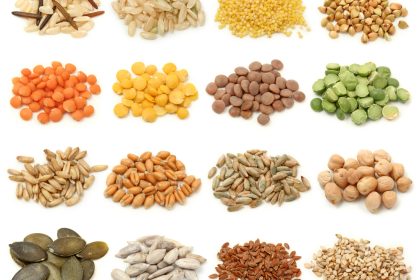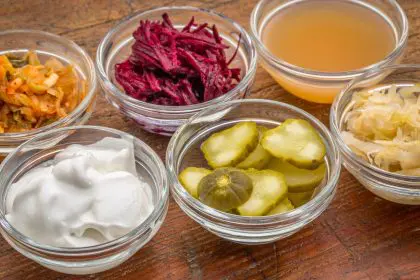Small changes often yield the most significant results when it comes to health and longevity. While completely overhauling your diet might feel overwhelming, strategic food substitutions offer a practical approach to improving nutrition without sacrificing enjoyment. These thoughtful swaps eliminate potentially harmful ingredients while introducing foods rich in compounds that support cellular health, reduce inflammation, and potentially extend lifespan.
Research consistently shows that dietary patterns significantly influence how well and how long we live. Blue Zones—regions where people commonly live past 100—demonstrate the profound impact of diet on longevity. While genetics play a role in determining lifespan, nutrition represents one of the most powerful modifiable factors for adding healthy years to your life.
These nine food swaps introduce simple changes with potentially life-extending benefits. Each substitution removes something problematic while adding nutrients that support your body’s natural longevity mechanisms.
1. Swap processed meats for fatty fish
Few dietary changes offer as substantial longevity benefits as replacing processed meats with fatty fish. Processed meats including bacon, sausage, hot dogs, and deli meats contain preservatives called nitrates and nitrites, which can form potentially carcinogenic compounds during digestion. Additionally, their high saturated fat content contributes to inflammation and cardiovascular stress.
Fatty fish—particularly salmon, mackerel, sardines, and herring—provide a protein-rich alternative packed with omega-3 fatty acids that combat the very inflammation that processed meats promote. These essential fats reduce cardiovascular disease risk by improving cholesterol profiles, lowering blood pressure, and preventing arterial plaque formation.
Beyond heart health, the omega-3s in fatty fish support brain function and may slow cognitive decline associated with aging. The protein in fish provides all essential amino acids while delivering fewer calories and less saturated fat than processed meats.
For practical implementation, consider salmon patties instead of hamburgers, sardine toast instead of ham sandwiches, or tuna salad instead of salami. Even incorporating fish twice weekly while reducing processed meat consumption can significantly impact health outcomes and potentially extend lifespan by reducing cancer risk and cardiovascular disease.
2. Replace white bread with whole grain alternatives
White bread remains a dietary staple worldwide despite its minimal nutritional value. The refining process strips wheat of its fiber-rich bran and nutritious germ, leaving mostly starch that rapidly converts to sugar during digestion. This quick conversion triggers insulin spikes, contributing to inflammation, weight gain, and increased diabetes risk over time.
Whole grain alternatives—including bread made from whole wheat, oats, rye, barley, or ancient grains like spelt—retain all parts of the grain kernel and the nutrients within them. These intact grains contain fiber that slows digestion, preventing blood sugar spikes while supporting gut health through prebiotic effects.
The bran and germ in whole grains contain compounds with specific longevity benefits. Polyphenols act as antioxidants that combat cellular damage from oxidative stress. Fiber from whole grains feeds beneficial gut bacteria, which produce short-chain fatty acids that regulate inflammation and metabolism. Micronutrients like magnesium, selenium, and B vitamins support hundreds of biological processes associated with healthy aging.
Epidemiological research consistently links whole grain consumption with reduced mortality from all causes, particularly cardiovascular disease. Each daily serving of whole grains correlates with approximately a 5% reduction in total mortality risk—a remarkable return on a simple food substitution.
When making the switch, look beyond marketing claims of “made with whole grains” to products listing whole grain flour as the first ingredient. Authentic whole grain products should deliver at least 3 grams of fiber per serving.
3. Choose olive oil instead of butter
The type of fat you use for cooking and food preparation significantly impacts long-term health. Butter, with its high saturated fat content, can raise harmful LDL cholesterol levels when consumed regularly, potentially accelerating arterial plaque formation.
Extra virgin olive oil provides a longevity-promoting alternative supported by extensive research. This cornerstone of the Mediterranean diet contains monounsaturated fats that improve cholesterol profiles while reducing inflammation throughout the body. Beyond its beneficial fat composition, olive oil contains potent compounds including oleocanthal, which exhibits anti-inflammatory effects similar to ibuprofen, and oleuropein, which protects against oxidative damage.
The health benefits of this simple swap extend far beyond heart protection. Regular olive oil consumption correlates with reduced cancer risk, improved cognitive function, and better blood sugar regulation. Particularly impressive are studies showing that those consuming the most olive oil experience lower all-cause mortality compared to those using primarily other fats.
For maximum benefit, choose extra virgin olive oil, which undergoes minimal processing and retains the highest levels of beneficial compounds. Use it for low to medium-heat cooking, salad dressings, and as a finishing oil on vegetables and whole grains. Even partially replacing butter with olive oil yields measurable health improvements over time.
4. Substitute beans for ground meat
Ground beef and similar meat products form the protein base for countless meals worldwide, from tacos to pasta sauces. While these foods provide complete protein, they also deliver significant saturated fat, cholesterol, and potential exposure to hormones or antibiotics depending on meat quality and sourcing.
Beans and legumes offer a plant-based alternative that supports numerous longevity pathways. Their protein content, while not complete on its own, becomes nutritionally complete when paired with whole grains or nuts. The protein in beans comes packaged with soluble fiber that lowers cholesterol and stabilizes blood sugar—two critical factors for long-term health.
Beyond macronutrients, beans contain resistant starch that feeds beneficial gut bacteria linked to longevity. Their high antioxidant content, particularly in colored varieties like black and kidney beans, protects against cellular damage associated with aging. Additionally, beans provide folate, potassium, and magnesium—nutrients often lacking in modern diets that support cardiovascular and neurological health.
Population studies consistently show that regular bean consumption correlates with longer lifespans. In Blue Zone regions where centenarians are common, beans typically feature prominently in daily meals. Research suggests eating beans four or more times weekly may reduce mortality risk by up to 22% compared to consuming them less than once weekly.
Making this swap works beautifully in many recipes. Try black beans in tacos, lentils in pasta sauce, or white beans in chili. For those transitioning gradually, even replacing half the meat with beans offers substantial benefit while maintaining familiar flavors and textures.
5. Replace sugary breakfast cereals with steel-cut oats
Breakfast establishes metabolic patterns that influence hunger, energy, and food choices throughout the day. Sugary cereals—even those marketed as healthy—often contain refined grains, minimal fiber, and excessive added sugars that trigger blood glucose spikes followed by energy crashes.
Steel-cut oats provide a minimally processed alternative that supports stable energy and multiple longevity mechanisms. These coarsely chopped oat groats retain their natural fiber structure, slowing digestion and preventing the blood sugar roller coaster associated with refined breakfast foods. Their beta-glucan fiber specifically reduces cholesterol absorption while supporting immune function.
The sustained energy from steel-cut oats comes with impressive nutritional benefits. Their protein content exceeds most grains, supporting muscle maintenance during aging. Unique antioxidants called avenanthramides reduce inflammation markers associated with chronic disease development. Minerals including manganese, phosphorus, and iron support metabolic processes crucial for cellular repair and energy production.
Research links regular oat consumption with reduced mortality, particularly from cardiovascular causes. The combination of soluble fiber, plant proteins, and anti-inflammatory compounds appears to support multiple aspects of cardiometabolic health that influence longevity.
For practical implementation, prepare steel-cut oats in advance and refrigerate for quick reheating on busy mornings. Enhance their longevity benefits by topping with berries, walnuts, and a sprinkle of cinnamon—all foods with their own lifespan-extending properties.
6. Choose dark chocolate over milk chocolate treats
The desire for sweet treats seems virtually universal, but the type of dessert you choose can significantly impact long-term health. Milk chocolate and similar confections primarily deliver sugar and fat with minimal beneficial compounds.
Dark chocolate with at least 70% cacao content offers a satisfying alternative with impressive longevity credentials. The high cocoa concentration provides flavanols that improve blood vessel flexibility and circulation while lowering blood pressure—effects that reduce cardiovascular disease risk. These same compounds appear to enhance cognitive function by increasing blood flow to the brain.
The robust antioxidant profile of dark chocolate rivals that of many fruits and vegetables. These compounds neutralize free radicals that otherwise damage cells and accelerate aging processes. Additionally, dark chocolate contains magnesium, iron, zinc, and copper—minerals that support hundreds of enzymes involved in energy production and cellular maintenance.
Moderate dark chocolate consumption correlates with reduced mortality in longitudinal studies. Research suggests those consuming dark chocolate regularly show lower rates of heart disease and stroke compared to those who avoid chocolate entirely.
For maximum benefit, choose varieties with minimal added sugar and at least 70% cacao content. Even small portions—approximately one ounce several times weekly—appear sufficient to confer health benefits while satisfying sweet cravings with minimal sugar impact.
7. Replace white rice with cauliflower rice
White rice serves as a dietary staple globally, but its minimal fiber and nutrient content, combined with its significant impact on blood sugar, make it less than ideal for longevity. The refining process removes the nutritious bran and germ, leaving primarily starch that rapidly converts to glucose during digestion.
Cauliflower rice—simply cauliflower processed to rice-like consistency—provides a remarkably versatile alternative with substantial longevity benefits. This cruciferous vegetable contains compounds called glucosinolates and isothiocyanates that activate detoxification pathways and reduce cancer risk. These compounds help the body eliminate potentially harmful substances while supporting cellular health.
Beyond its cancer-fighting properties, cauliflower rice delivers impressive nutritional benefits with minimal caloric impact. Its high vitamin C content supports collagen production and immune function. Its vitamin K helps maintain bone density during aging. Its fiber feeds beneficial gut bacteria linked to longevity, while its high water content promotes satiety without excessive calories.
Studies consistently link cruciferous vegetable consumption with reduced all-cause mortality and particularly lower cancer-related deaths. Research suggests consuming cruciferous vegetables several times weekly may reduce mortality risk by up to 22% compared to rare consumption.
Cauliflower rice works beautifully in stir-fries, bowl meals, and as a side dish with curries or stews. Its mild flavor readily absorbs seasonings while its texture provides a satisfying alternative to starchy grains. Commercial options make this swap particularly convenient, though homemade versions offer the freshest flavor and nutrient content.
8. Swap fruit juice for whole fruits
Fruit juice often masquerades as a healthy beverage despite containing concentrated sugars without the fiber that naturally slows sugar absorption in whole fruits. Even 100% pure juices can cause rapid blood glucose increases similar to soda, stressing metabolic systems over time.
Whole fruits provide all the vitamins and phytonutrients found in juice but packaged with fiber that dramatically changes how the body processes their natural sugars. This fiber slows sugar absorption, preventing insulin spikes while supporting healthy gut bacteria linked to longevity. Additionally, the chewing required for whole fruits activates satiety signals that juice consumption bypasses.
The specific compounds in whole fruits appear particularly beneficial for longevity. Fruits contain thousands of phytochemicals that reduce oxidative stress, combat cellular damage, and modify gene expression in ways that may slow aging processes. Their potassium content supports healthy blood pressure, while their vitamin C facilitates collagen production necessary for skin, blood vessel, and joint health during aging.
Research consistently shows that whole fruit consumption correlates with reduced mortality from all causes, particularly cardiovascular disease. Each daily serving of whole fruit appears to reduce mortality risk by approximately 5%, while fruit juice consumption shows no such benefit.
Whenever possible, choose whole fruits over their juiced counterparts. For hydration with flavor, try water infused with fruit slices, which provides refreshment without concentrated sugars.
9. Replace salty snacks with mixed nuts
Chips, pretzels, and similar salty snacks deliver sodium, refined carbohydrates, and often unhealthy fats while providing minimal nutritional value. Their high glycemic impact and inflammatory properties may accelerate cellular aging over time.
Mixed nuts offer a satisfying alternative with remarkable longevity benefits. Despite their caloric density, regular nut consumption consistently correlates with lower body weight and reduced metabolic disease—likely due to their satiating protein, fiber, and fat composition that discourages overeating.
The nutritional profile of mixed nuts supports multiple longevity pathways. Their healthy monounsaturated and polyunsaturated fats reduce inflammation and improve cholesterol profiles. Their vitamin E content protects cell membranes from oxidative damage. Their L-arginine improves arterial flexibility and circulation. Their minerals, including magnesium, potassium, and selenium, support hundreds of enzymatic reactions crucial for cellular health and repair.
Perhaps most impressive are the consistent findings that regular nut consumption correlates with reduced mortality. Multiple large-scale studies show that people consuming nuts several times weekly have 13-26% lower all-cause mortality than those rarely eating nuts. This protection appears particularly strong against cardiovascular and respiratory diseases.
For maximum benefit, choose unsalted or lightly salted mixed nuts without added oils or coatings. A small handful (approximately one ounce) several times weekly appears sufficient to confer significant health benefits while providing satisfying crunch and flavor.
The cumulative impact of simple changes
While each of these food swaps offers specific health advantages, their combined effect may exceed the sum of individual benefits. Many nutrition researchers now emphasize dietary patterns over isolated nutrients when studying longevity effects.
The swaps outlined here collectively shift eating patterns toward greater resemblance to the Mediterranean and Okinawan diets—both associated with exceptional longevity in their respective populations. They increase fiber, antioxidants, and anti-inflammatory compounds while reducing refined carbohydrates, unhealthy fats, and excessive animal protein.
For those concerned about taste and enjoyment, these substitutions offer flavor and satisfaction while improving nutritional profiles. Rather than focusing on restriction, they emphasize addition of beneficial alternatives that support both palate pleasure and cellular health.
The most powerful approach involves implementing these changes gradually but consistently. Even adopting one or two swaps initially creates momentum toward healthier patterns. Over time, these simple substitutions can potentially add years to your life and life to your years through their cumulative impact on the biological processes that influence aging and longevity.

















